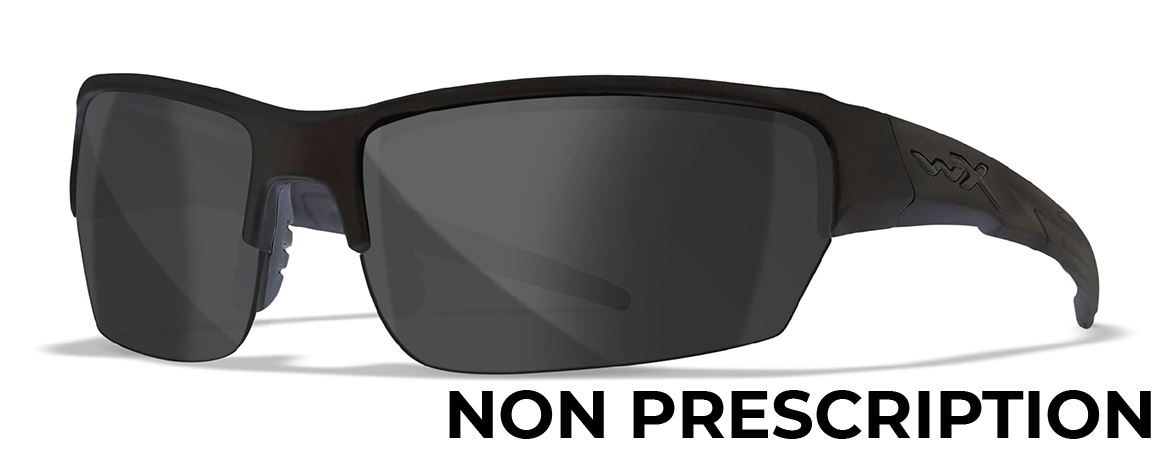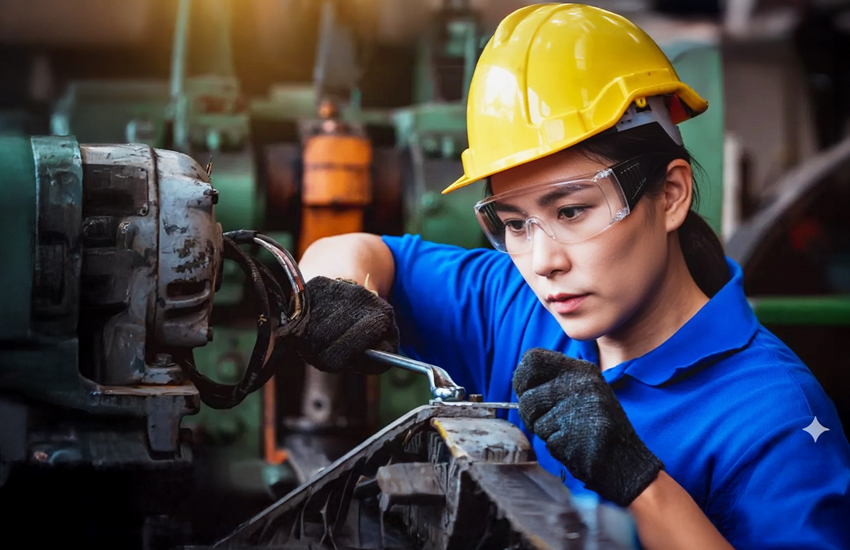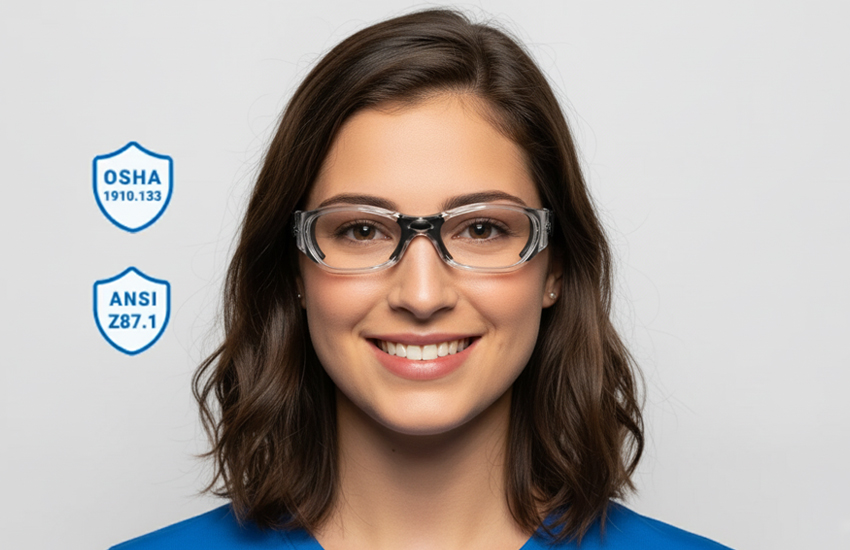
Protecting Your Workforce: The Role of Safety Glasses in High-Risk Industries
Every high-risk profession prioritizes safety. Workers in the mining, oil, gas, construction, and automotive sectors deal with risks on a regular basis. Of all these, eye injuries are common and serious.
A small spark, a piece of flying debris, or a chemical splash can change a life in seconds. Even dust or intense light can cause vision damage. So protecting the eyes of the workers is critical.
Thousands of people get eye injuries on the job every day. Safety glasses are necessary accessories, not trendy tools. When companies provide the right eye protection, accident rates decrease.
When safety is an integral part of the culture, employees feel valued and protected. Vision is valuable. Lost once, gone forever.
This article looks at how safety glasses help to save workers in high-risk jobs. We’ll explore top industries, real hazards, and smart solutions. And how a good prescription safety eyewear program can improve compliance and comfort.
Let’s see how something so small as safety glasses can make such a big difference.
Why Eye Protection Matters?
Human eyes are sensitive. A tiny object may cause tremendous harm. Eyes are exposed to many dangers in the workplace. A few of them are sharp fragments, dust, chemicals, heat and radiation.
Eye trauma can imply loss of time in the workplace, expensive treatment, and permanent blindness. The price is high. The human cost is higher.
Most workplace eye injuries occur because of not wearing protective eyewear. Or wearing the wrong type. A good pair of safety glasses might save almost 90% of eye injuries in the workplace.
There are several types of safety eyewear. Some are designed for impact protection. Others are for chemical or UV protection. The right pair depends on the job. Comfort matters, as well. Employees will wear glasses that fit and are comfortable.
Today, nearly all employees need vision correction. That is where a prescription safety eyewear program helps. It allows employees to get glasses that will fit their vision needs and meet safety standards.
Businesses that make long-term investments in appropriate eye protection are ultimately saving money. They minimize insurance premiums, downtime, and injuries. More significantly, they show their concern for others.
Wearing eye protection is a duty, not a requirement. Employees perform better when they feel safe. They focus more. And they trust management.
In dangerous industries, safety glasses are not optional. They are basic, essential components of every worker’s gear. Proper protection saves vision, time, and lives.
Construction Industry: A Hotbed of Eye Hazards

Construction is noisy, busy, and full of hazards. From welding to drilling, every task is risky, especially to the eyes.
Workers face flying fragments from cutting, grinding, or hammering. Cement dust and wood shavings can easily get into unprotected eyes. Sparks from welding and metal cutting are an even more serious hazard.
One moment without safety glasses can lead to permanent eye injury.
In construction, high-speed work and heavy machinery increase the chance of injury. Eye injuries are among the most common on the job. Despite that, many workers still go without eye protection.
Why? Some say glasses are uncomfortable. Others say they fog. Some don’t mix with helmets. These excuses lead to risky behavior.
But modern safety glasses have come a long way. Now they come with anti-fog coatings, better fits, and lighter materials. They are made to be worn with hard hats and face shields.
Good eyesight is critical in construction. Workers need to see lines, levels, and materials. People who wear regular glasses need even more care. This is why it is smart to have a prescription safety eyewear program. It ensures everyone has glasses that fit both their eyes and their occupation.
Regulations also help. OSHA requires eye protection on the majority of construction sites. But regulations are not effective unless they are followed.
Employers must train employees regarding when and how to wear safety glasses. They must also provide options for variation to meet different requirements.
Construction is tough. Losing an eye is tougher. With good safety eyewear, companies can build not only structures, but a safer, smarter workforce.
Mining, Oil & Gas: Safety Under Pressure

Among the most dangerous jobs in the world are mining, oil, and gas jobs. Workers face heat, chemicals, heavy equipment, and explosive atmospheres.
Underground or offshore, visibility is often low. Smoke, dust, and high-pressure fluid add to the risk factor. In these conditions, eye protection must be rugged, sealed, and reliable.
One splash of chemical liquid or one spark from a tool can lead to permanent vision loss. That is why safety glasses and sometimes goggles are required.
In mining, dust is a constant enemy. It can irritate, scratch, or infect the eyes. Workers need sealed or wrap-around protective glasses to exclude particles.
In oil and gas, there is also a possibility of chemical exposure. Glasses need to be corrosion and splash-resistant. The anti-fog feature is also a consideration in hot or moist environments.
But there are problems. Many workers do not like PPE. Pinching, slipping, or fogging glasses makes individuals less likely to wear them. That is where designing comes in.
Today, the best safety glasses are lightweight, durable, and breathable. Some of them are adjustable around the arms or nose pads. Others provide enhanced airflow to reduce fogging.
Companies must also make safety very personal. Training is useful, but glasses that fit individuals are as well. Safety can be maximized by giving employees equipment that they will wear.
A good approach is to offer safety glasses that correct vision. In this industry, clear sight can literally save lives.
Pairing protection with functionality, a prescription safety eyewear program gives workers exactly what they need to see and stay safe.
Protecting workers in mining, oil, and gas industry isn’t just best practice. It’s survival.
Automotive Industry: Precision Requires Protection

Precision is everything in the automotive industry. Whether manufacturing or repairing vehicles, workers rely on sharp vision.
Eye hazards are everywhere: metal shavings, sparks, lubricants, and abrasive lighting. Grinding, welding, and painting are all part of the job. And each job presents unique eye safety challenges.
Welding, for example, has high UV radiation. This can burn eyes in seconds. Mechanics also work with chemicals and sharp objects. A slip or splash can hurt quickly.
Even short-term jobs like tire changing or battery checking can expose eyes to acid, dust, or airborne debris.
Automotive repair workers often change tasks. They can use face shields, helmets or respirators. This is why protective glasses should interact with other PPE. They must be light, thin, and flexible.
Visibility is critical. Clear, anti-reflective lenses enable workers to see small parts and details. Anti-scratch coatings matter in dirty environments as well.
For most in this profession, regular glasses are not sufficient. They do not protect against impact or conform to ANSI safety standards. That’s why businesses should provide compliant safety eyewear.
A great solution is corrective safety glasses and protection from harm. Providing these through a prescription safety eyewear program shows commitment to comfort and employee safety.
Fashion matters, as well. Employees will be more likely to wear glasses that are comfortable and stylish. Modern styles allow protection without the bulky look.
Safety in the automotive world is accuracy on the line and in protection. Investment in correct glasses keeps eyes sharp and prevents damage to the eyes.
EyeWebSafety: Your Workforce’s First Line of Defense
Quality matters with eye protection. So does convenience. That is where EyewebSafety comes into play.
EyewebSafety provides certified safety spectacles for all industries. From labs to oil rigs, our glasses are crafted for real work settings.
We offer a complete range of ANSI Z87.1-approved safety glasses. That is, non-prescription and prescription. Their frames are comfortable, stylish, and long-wearing.
EyewebSafety partners with employers to create custom safety programs. Need bulk orders? Don’t worry. Need a branded store for employee buying? They’ve got it.
Our process is simple. Employees can choose frames online, upload their prescription, and receive safety glasses at home. No complicated forms. No guessing.
Many organizations use EyewebSafety to launch or improve their prescription safety eyewear program. This helps ensure all employees, whether they have good vision or not, are safe and compliant.
What do businesses choose Eyeweb? Because they get constant service, rapid turnaround, and equipment that workers actually want to wear.
EyewebSafety also helps safety officers and HR teams. We provide order tracking, compliance, and eyewear renewal tools. That makes it easy to manage safety.
When workers have glasses that are comfortable for the job and their face, they’ll wear them. When glasses fit comfortably, compliance is boosted.
EyewebSafety helps make that happen. For companies that value safety, it’s a trusted partner in protecting what matters most: vision.

Creating a Culture of Vision Safety
Eye safety isn’t just about giving glasses. It’s creating culture. And that starts in management.
If managers wear safety glasses, employees follow. If safety is part of everyday language, not just signs, then individuals care.
Training is key. Employees should understand how, where and when to wear eye protection. It is made to stick through real-life examples and demos.
Access is important too. If glasses break, they should be easily replaceable. If someone needs a new fit, help should be available.
Comfort is also important. No one wants to wear something which is not comfortable. Employers need to offer different styles and fits. Then employees can choose what works best for them.
Recognition is effective, too. Small rewards for safe behavior will boost morale and compliance. So will sharing success stories from the team.
Rules must be explicit. But they must be fair. Safety is not punishment; it’s protecting.
With a strong culture, workers remind others to be safe. Safety becomes part of the job, not as an extra step.
By combining training, comfort, access, and leadership, businesses can establish enduring safety habits.







Leave A Comment